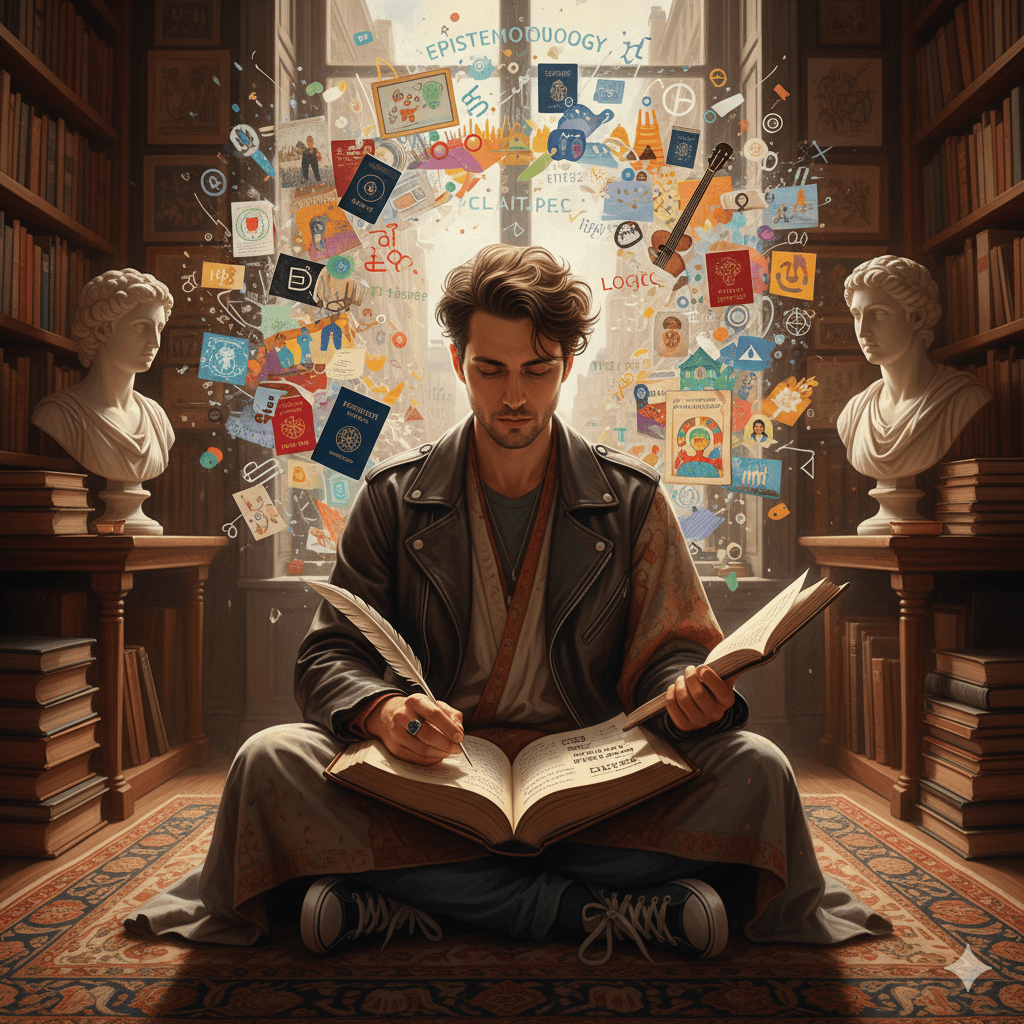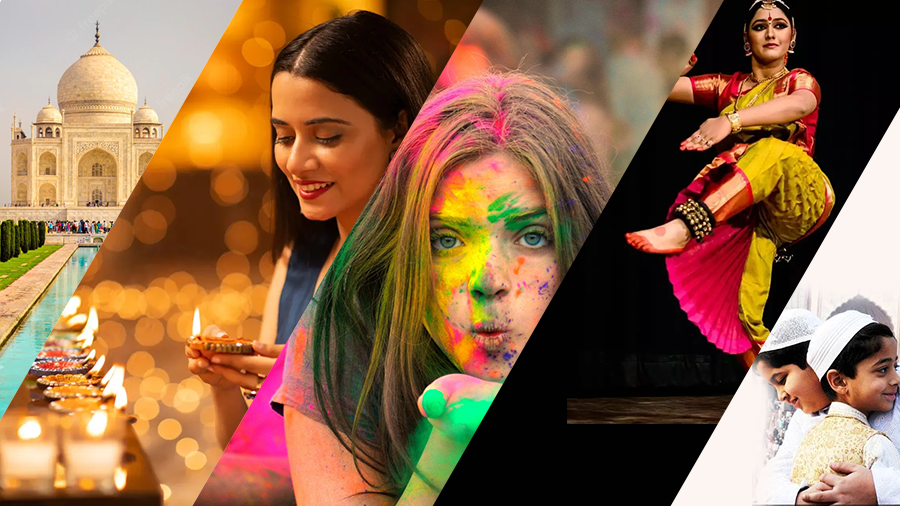
The Interplay of Philosophy and Identity: Who Are We in Uttar Pradesh?
A Mosaic of Beliefs, Cultures, and Communities
Uttar Pradesh, the cultural and demographic heart of India, is more than just a geographic entity. It is a philosophical landscape where history, religion, language, and culture converge to shape identities. In this state of over 240 million people (Census 2011), the question of “Who are we?” is both deeply personal and profoundly collective. The interplay of tradition and modernity, caste and community, and regional and national consciousness defines the essence of identity in Uttar Pradesh, offering a unique lens to examine its philosophical and cultural core.
Philosophical Foundations of Identity in Uttar Pradesh
1. Religious Philosophies Shaping Identity
- Hinduism’s Influence: Uttar Pradesh is home to Varanasi, the spiritual capital of India, where the philosophy of moksha (liberation) and karma (action) dominate the ethos.
- Example: The Kashi Vishwanath Temple symbolizes continuity and devotion, drawing millions of pilgrims annually.
- Islamic Contributions: The Ganga-Jamuni Tehzeeb, a syncretic culture blending Hindu and Muslim traditions, exemplifies inclusivity and shared heritage, rooted in Islamic philosophies of equality and justice.
- Cultural Expression: Cities like Lucknow reflect this harmony through their architecture, cuisine, and language, particularly Urdu.
2. Caste and Social Structures
- Caste as Identity: Caste hierarchies, deeply rooted in Hindu philosophy, have historically shaped social mobility and community roles in Uttar Pradesh.
- Modern Tensions: Political movements like those led by the Bahujan Samaj Party (BSP) challenge these hierarchies, advocating for a more equitable social order.
3. Language and Regional Identity
- Dialect Diversity: Languages like Awadhi, Bhojpuri, and Braj carry the philosophical and cultural nuances of their respective regions.
- Example: Awadhi’s association with Tulsidas’s Ramcharitmanas has made it a cornerstone of religious identity, while Braj’s devotional poetry reflects Krishna’s philosophy of divine love.
The Evolution of Identity: Tradition Meets Modernity
1. Urbanization and Individualism
- Traditional Values: Collective identity, rooted in family and community, remains a defining feature in rural Uttar Pradesh.
- Modern Shifts: Urban centers like Noida and Ghaziabad are fostering a culture of individualism, driven by economic opportunities and exposure to global ideologies.
2. The Role of Education
- Cultural Transition: Access to education, particularly for marginalized groups, is reshaping identities by offering new avenues for self-expression and empowerment.
- Data Insight: Female literacy has risen from 57% (2015-16) to 63% (2020-21), according to NFHS-5, signaling a gradual shift in traditional gender roles.
3. Digital and Global Influences
- Technological Identity: Social media platforms have become arenas for self-expression, often blending traditional values with modern aspirations.
- Example: Campaigns like Digital UP have enabled youth to embrace a hybrid identity, merging local traditions with global perspectives.
Identity in the Political Arena
1. Caste-Based Mobilization
- Political identity in Uttar Pradesh often revolves around caste, with parties like the Samajwadi Party (SP) and BSP leveraging caste affiliations to consolidate voter bases.
2. Religious Polarization
- Challenge: While religious diversity is a strength, divisive narratives have occasionally led to tensions, threatening the state’s pluralistic identity.
- Example: The Ram Janmabhoomi Movement redefined Hindu identity in the state, influencing both cultural and political discourse.
3. Regional Pride
- Leaders like Yogi Adityanath emphasize regional development, intertwining identity with economic progress. Projects like the Purvanchal Expressway aim to instill pride in regional advancements.
Cultural Identity Through Art and Literature
1. Folk Traditions and Storytelling
- Uttar Pradesh’s oral traditions, like Alha-Udal ballads in Bundelkhand, preserve historical and moral narratives, reinforcing community identity.
2. Literature as a Mirror
- Writers like Premchand and Amir Khusrau have explored themes of social justice, unity, and spirituality, reflecting the evolving identity of the state.
3. Festivals and Celebrations
- From Holi and Eid to Diwali and Muharram, festivals in Uttar Pradesh transcend religious boundaries, showcasing the state’s inclusive cultural identity.
Challenges to Identity in Uttar Pradesh
1. Socio-Economic Disparities
- Rural vs. Urban: While urban areas rapidly modernize, rural regions often struggle to balance traditional values with modern needs, creating identity conflicts.
2. Preservation vs. Progress
- The push for development, through industrial projects and urbanization, sometimes threatens traditional practices and cultural heritage.
3. Linguistic Decline
- Dialects like Braj and Bundeli face neglect as Hindi and English dominate educational and professional spaces, risking the loss of regional identities.
Strategies to Foster a Balanced Identity
- Promote Cultural Education
- Integrate regional languages, history, and philosophies into school curricula to preserve and celebrate UP’s diversity.
- Encourage Community Dialogue
- Facilitate discussions across caste, religion, and regional lines to strengthen unity and mutual understanding.
- Leverage Technology for Preservation
- Digitize folk traditions, literature, and art to ensure their accessibility for future generations.
- Support Inclusive Governance
- Implement policies that balance economic progress with cultural preservation, ensuring equitable growth for all communities.
Conclusion: Embracing a Pluralistic Identity
The interplay of philosophy and identity in Uttar Pradesh is a testament to its cultural richness and resilience. While the state grapples with the challenges of modernization, its diverse heritage offers a foundation for navigating these shifts.
By fostering a pluralistic identity that respects both tradition and progress, Uttar Pradesh can continue to evolve as a microcosm of India’s unity in diversity, answering the question of “Who are we?” with inclusivity and pride.


